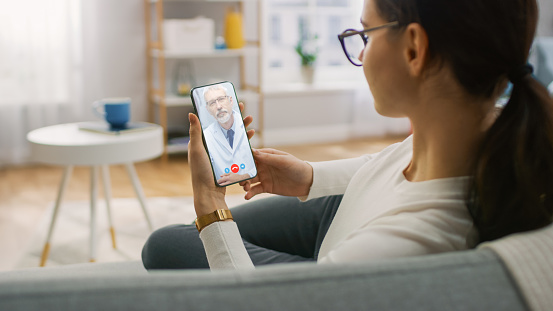The pandemic altered how many patients sought care in 2020. In fact, four in 10 U.S. adults reported avoiding medical care because of COVID-19 concerns, according to the Centers for Disease Control and Prevention.
At the same time, telehealth usage increased due to its ability to offer patients a way to visit their doctors from the comfort and safety of home.
Blue Cross and Blue Shield of Nebraska’s (BCBSNE) 2020 telehealth data aligns with this trend with 45,000 more of the company’s members using telehealth in 2020 than in 2019, leading to a 2,178.65% increase in usage.
This industry-wide shift impacted the way health care workers, like Dr. Steven Zuber, internal medicine physician at Think Whole Person Healthcare (Think), cared for patients.
While Zuber had previous experience treating patients via telemedicine, the option wasn’t available through Think until the pandemic spurred the change. He found it particularly helpful for treating two types of patients, those:
- With chronic conditions, such as diabetes, who needed continuous care to manage their health and could not afford to miss appointments due to the pandemic
- Exposed to or diagnosed with COVID-19
“We saw a lot of people who had a COVID-19 diagnosis that had worsened but weren’t sure if they needed to go to the emergency room,” Zuber said. “We helped treat them through telemedicine, and I think that prevented a lot of hospitalizations and directed some people appropriately to the ER, where they unfortunately did have to be admitted.”
In addition to those with chronic conditions and COVID-19, the increase in telehealth usage also provided benefits for busy patients and those with mental health conditions.
Zuber said patients juggling work and home responsibilities are able to be seen quickly for care through telehealth, making it easier for them to get what they need without disrupting their schedules.
“Patients say the neat thing about it is that a 15-minute visit now really only takes 15 minutes,” Zuber said. “They didn’t have to take time off work.”
Four in 10 adults in the U.S. have reported symptoms of anxiety or depressive disorder during the pandemic, according to the Kaiser Family Foundation, a nonprofit with a focus on national health issues. This share has increased from one in 10 adults who reported these symptoms from January to June of 2019.
Think saw the same increase during the pandemic. With telemedicine available, Zuber said the practice was able to help patients receive care while reducing the stigma associated with mental illness.
“Everyone is really open through the telehealth visit, and I think the comfort of being in their own home makes them feel it’s a little easier to reach out,” Zuber said. “As we know, so much of mental health is unrecognized. People don’t come in for it, and it’s not treated. It has such a big impact on people’s quality of life and their overall physical health, so anything that improves that matters.”
While telehealth isn’t appropriate for certain types of care, such as when a patient needs lab work or other in-office tests done for diagnosis, Zuber said he hopes telemedicine “will continue to have an impact going forward.”
For more articles like this, visit Health and Wellness.






